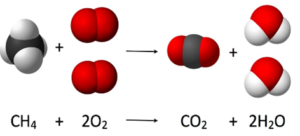This page contains the AQA GCSE Chemistry C9 Hydrocarbons Questions and kerboodle answers for revision and understanding Hydrocarbons.This page also contains the link to the notes and video for the revision of this topic.
C9.1 Crude Oils and Fuels AQA GCSE Chemistry C9 Hydrocarbons Kerboodle Answers Page No 149
- a.
Crude oil is a dark smelly liquid which is a mixture of many different hydrocarbons.
Most important useful chemicals,polymers and fuels are obtained from crude oil. For example, Gasoline is made from crude oil. Alkenes used in making polymers are obtained from crude oil. Lubricating oil is also used to keep our automobile engines from getting too hot and to ensure that all moving parts of the machinery are kept in good working order.
c.
Different components of crude oil have different boiling points, therefore substances in crude oil can be separated using fractional distillation. The crude oil is evaporated and its vapours allowed to condense at different temperatures in the fractionating column.
- Answer.
As crude oil is a mixture of shorter and longer chain hydrocarbons, it is not useful. It needs to be separated into different fractions to be useful.
- a. General formulae of alkanes is CnH2n+2
- Molecular Formulae and names of 6 to 10 carbon alkane
Answer.
Hexane C6H14
Heptane C7H16
Octane C8H18
Nonane C9H20
Decane C10H22
4 a. Molecular formula and displayed formulae of octane
Octane C8H18
- 22 carbon alkanes will have 46 hydrogen atoms.
Decosane C22H46
- 32 hydrogen atoms will have 15 carbon and the molecular formulae will be
C15H32 – Pentadecane
Alkanes are called saturated compounds because alkanes have all the carbon bonded together by a single bond and they are made up of carbon and hydrogen only.
C9.2 Fractional distillation of oil AQA GCSE Chemistry C9 Hydrocarbon Kerboodle Answers Page No 151
- a.
The boiling point of hydrocarbons increases as the number of carbon atoms in the molecule increases. This is because the forces between molecules increase as the size of the molecule increases.
Long chain molecules have lower volatility that means have less tendency to turn into gas. So volatility decreases with chain length.
iii.
Long chain molecules are thick having high viscosity compared to short chain molecules. So viscosity of carbon atoms increases with chain length.
b.Answer.
Short chain molecules make better fuels as they ignite more easily and burn well, with cleaner(less smoky)flames.
2.Table summarizing the properties of hydrocarbon with size
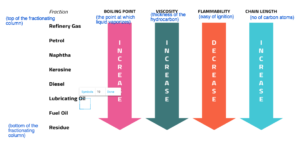
3.
Answer.
- Crude oil is separated into Hydrocarbons with similar boiling points, called fractions. This process is called fractional distillation.
- Crude oil is heated until it boils and then the hydrocarbon gases are entered into the bottom of the fractionating column.
- As the gases go up the column the temperature decreases. The hydrocarbon gases condense back into liquids and the fractions are removed from the sides of the column.
- The different fractions have different uses. The smaller the hydrocarbon molecule, the further it rises up the column before condensing.
- The fractionating column operates continuously. The temperatures shown are approximate.
- A sample of crude oil may be separated in the laboratory by fractional distillation. The collection vessel is changed as the temperature rises to collect different fractions.
- The different fractions collected are :-
Refinery Gases : used as a fuel
Gasoline : petrol
Naptha : chemicals
Kerosene : fuel for vehicles, aircraft
Diesel : fuel for cars, lorries and buses
Fuel Oil : Fuel for ships and power stations
Residue : Bitumen for roads and roofs
C9.3 Burning hydrocarbon fuels AQA GCSE Chemistry C9 Hydrocarbon Kerboodle Answers Page No 153
1.a.
The product of complete combustion of hydrocarbon is carbon dioxide and water.
- The products of combustion are carbon dioxide and water.
Carbon dioxide will turn limewater milky. Water will turn blue cobalt chloride paper to pink.
- a. Methane burns in air to produce carbon dioxide and water
Answer.
CH4(g) + 2O2(g) → CO2(g) + 2H2O(l)
1.Answer.
During incomplete combustion methane gas burns with a yellow flame and produce carbon monoxide and water.
methane + oxygen → carbon monoxide + water.
2CH4(g) + 3O2(g) → 2CO(g) + 4H2O
1.
Carbon monoxide is a very poisonous gas. It cannot be seen or smelled. Faulty gas fires or boilers may produce carbon monoxide and poison the air in a room without anyone knowing.
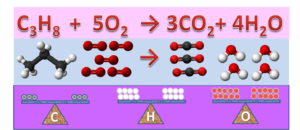
1 mole of propane requires 5 moles of oxygen.
16 kg of propane = 363.6 moles
363.6 moles of propane will required =363.6*5 = 1818 moles of oxygen
1818 moles of oxygen = 1818*32 = 58176 g = 58 kg.
So 16 kg of propane will require 58 kg of oxygen.
C9.4 Cracking Hydrocarbons AQA GCSE Chemistry C9- Hydrocarbon Kerboodle Answers Page No 155
- a. Cracking is important because cracking produces shorter chain saturated hydrocarbons which are more in demand as fuel and unsaturated hydrocarbon which is used in polymer synthesis.
b.
Large hydrocarbon molecule can be cracked in an oil refinery by thermal decomposition reaction in which large molecule split apart to form smaller, more useful ones.
2.a. i.
B hydrocarbon is unsaturated as it decolorizes bromine water
ii.Unsaturated hydrocarbons are hydrocarbons that have double or triple covalent bonds between adjacent carbon atoms. Those with at least one carbon-to-carbon double bond are called alkenes and those with at least one carbon-to-carbon triple bond are called alkynes
iii.Alkenes are formed in cracking.
b.A hydrocarbon is used as a fuel.
ii..Shorter chain Alkanes are formed in cracking.
1.Cracking is an example of thermal decomposition.
- dodecane → octane + ethene + ethyne
C12H24(g) → C2H2(g) + C8H18(g) + C2H4(g)
Summary Questions AQA GCSE Chemistry C9- Hydrocarbon Kerboodle Answers Page No 156
1. a.
- General formula of alkanes is
CnH2n+2
- 18 carbon alkanes is C18H38
iii. Formula of the alkane with 18 hydrogen atoms is C8H18
- Graph showing the boiling points of alkanes with the number of carbon atoms are :-
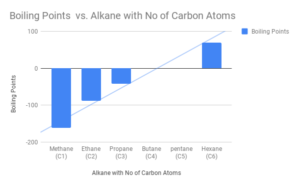
c.From the above graph we can infer that there is a positive correlation between the carbon atoms and the boiling points. Greater the number of carbon atoms higher the boiling point.
1.The boiling point of pentane is around 35-38 degree celsius.
- a.
Hydrocarbons are organic compounds that are made of only hydrogen and carbon atoms. They are found in many places, including crude oil and natural gas.
- Saturated means the
Maximum number of hydrogen atoms in each molecule. To have maximum number of hydrogen atoms there are only single covalent bonds between the carbon atoms
1.i..
Propane, C3H8
1. The letters represent the atoms of carbon and hydrogen in the displayed formulae. Letter C is for carbon and letter H is for hydrogen.
iii..
The lines between the letters in the displayed formulae represent the single covalent bonds.
- Word equation for complete combustion of propane:
Propane + Oxygen → Carbon dioxide + Water
ii. Balanced equation including the state symbols for the combustion of propane is :
Answer.
C3H8 (g) + 5O2 (g) → 3CO2 (g) + 4H2O (l)
- Carbon monoxide is produced when there is a poor supply of oxygen due to incomplete combustion of gas heater.
- A.
At the top of the fractionating column, there is a lower temperature. So the alkane with the lower boiling point will be collected at the top. So alkane B with the boiling point of 126°C will be collected at the top of the fractionating column.
- B will be the better fuel as B made up of smaller alkane molecules than A so have lower boiling point. Smaller hydrocarbons are more flammable than molecules with longer chain.
- (i) Answer.
A will be more viscous than B as it is a longer chain alkane
- b will be more volatile as it has a lower boiling point.
4.A Answer.
Ice was putted around the U-tube to condense steam formed in combustion of ethanol and collect it as a liquid.
1.The substance formed in the U-tube is water. Water will turn blue cobalt chloride paper pink and it also turn anhydrous copper sulphate blue.
1.As carbon dioxide is produced due to combustion of ethanol, carbon dioxide will turn limewater milky.
1.We can compare the time taken for limewater to turn cloudy with just air and compare it to the time is takes for the product of combustion to turn cloudy to compare and prove that the carbon dioxide produced is not only through air but due to combustion.
1.I.. Pentacosane contains 25 carbon atoms. So chemical formula of pentacosane is C25H52
ii.Word equation for the combustion of pentacosane is :-
Pentecosane + oxygen → carbon dioxide + water
iii. Balanced equation for the complete combustion of pentacosane is:
C25H52+ 38O2 → 25CO2 + 26H2O
5.a. This type of reaction is Cracking
1.Cracking can be done either through thermal cracking or catalytic cracking. In thermal cracking, vapours are passed over steam at high pressure. In catalytic cracking, vapours are passed through the catalyst.
c.
i. Chemical formula of alkanes
C15H32 and C8H18
1.Chemical formula of alkenes
C3H6 and C2H4
1.In an oil refinery, the reaction is carried out To break down large, less useful hydrocarbon molecules into smaller, more useful ones.
Practice Questions AQA GCSE Chemistry C9- Hydrocarbon Kerboodle Answers
Page No 157
01.1. A hydrocarbon is an organic compound made of nothing more than carbons and hydrogens. It is possible for double or triple bonds to form between carbon atoms and even for structures, such as rings, to form.
Saturated hydrocarbons have as many hydrogen atoms as possible attached to every carbon. Saturated hydrocarbons have only single bonds between adjacent carbon atoms.
Unsaturated hydrocarbons have double and/or triple bonds between some of the carbon atoms.
01.2.
A has the lowest boiling point as it has the lowest number of carbon atoms.
01.3.
C is an alkene so it has a general formula of CnH2n
01.4.
E as it has 7 carbon atoms so it can be cracked to form D and C3H6
01.5. C can decolourises bromine water as it is an alkene.
01.6.
D has a relative formula mass of 58.
01.7.
C14H30 can be cracked thermally or catalytically. For catalytic cracking, it is heated ( any temperature between 300°C and 1000°C) with a catalyst or mixed with steam for thermal cracking..
02.1.
Answer.
Fractional distillation is a technique used to separate liquids according to their boiling points.
In case of Fractional distillation of crude oil because they have different boiling points, the substances in crude oil can be separated using fractional distillation.
Crude oil is heated to vaporize the different hydrocarbons in a tank which is cool at the top and hot at the bottom. The vapours then rise and the different hydrocarbons condense at their specific boiling points, allowing them to be separated.
02.2. Answer Balanced equation for cracking of C12H26
C12H26 = C7H16 + C2H4 + C3H6
2.3 Answer.
C12H26 + 14 O2 = 9CO + 3CO2 + 13H2O
02.4. Incomplete combustion is poisonous as it produces carbon monoxide. Incomplete combustion occurs when the supply of air or oxygen is poor.
Water is still produced, but carbon monoxide and carbon are produced instead of carbon dioxide.
The carbon is released as soot.
Carbon monoxide is produced.
Carbon monoxide is a poisonous gas, which is one reason why complete combustion is preferred to incomplete combustion.
It binds to the blood or reduces the blood’s ability to carry oxygen.
- The equation shows the cracking of C18H38 produce two liquid products.
03.1. For cracking C-C bond needs to be broken down which require energy. Therefore, cracking is an endothermic process.
(C-C) bonds need to broken which requires energy / is endothermic
03.2.
Answer.
C5H10 is an alkene or C5H10 has a double bond or C5H10 is unsaturated. Alkenes are generally more reactive than alkanes.
The reaction with bromine water is used as a test to see if an organic compound is unsaturated(like the alkenes with their C=C double bond.
A positive test for an unsaturated hydrocarbon is that it turns orange bromine water colourless.
The alkanes do not react with bromine water, so you can use this test to distinguish between an alkene and an alkane.
03.3. C18H38 is a longer hydrocarbon than C13H28
C18H38 has stronger intermolecular forces (of attraction) which require a higher temperature / more energy to overcome / break. A straight-chain alkane will have a boiling point higher than a branched-chain alkane due to the greater surface area in contact, thus the greater van der Waals forces, between adjacent molecules.
04.1.
Answer.
Moles of Carbon Dioxide produced = 264/44 = 6 moles ( by using the formulae moles= Mass/Mr)
Moes of Water produced = 108/18 = 6 moles
Hence we got 6 moles of CO2 and 6 moles of H2O. Using that we have balanced the left side.
So the overall equation is
C6H12 + 9O2→ 6CO2 + 6H2O
DISCLAIMER
Disclaimer: I have tried by level best to provide the answers and video explanations to the best of my knowledge. All the answers and notes are written by me and if there is any similarity in the content then it is purely coincidental. But this is not an alternative to the textbook. You should cover the specification or the textbook thoroughly. This is the quick revision to help you cover the gist of everything. In case you spot any errors then do let us know and we will rectify it.
References:
BBC Bitesize
AQA GCSE Science Kerboodle textbook
Wikipedia
Wikimedia Commons
This page contains the detailed and easy notes for AQA GCSE Chemistry Organic Chemistry for revision and understanding Organic Chemistry.
Banner 1
New (9-1) AQA GCSE Chemistry Paper 2: Complete Revision Summary
ORGANIC CHEMISTRY
4.7 Organic Chemistry
- Hydrocarbons and Crude Oil
- Alkanes
- Fractional Distillation
- Properties of Hydrocarbons
- Cracking
- Alkenes
- Reaction of Alkenes
- Alcohols
- Carboxylic Acid
- Addition Polymerization
- Condensation Polymerization
- Amino Acids
- DNA
Banner 2
CRUDE OIL
- It is a black thick liquid which takes millions of years to form.
- It is the mixture of hydrocarbon.
- Hydrocarbon are the compounds made up of carbon and hydrogen only.
- The components of the crude oil are important and the crude oil is separated by the process of fractional distillation.
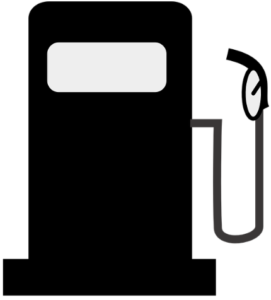
HYDROCARBON PROPERTIES
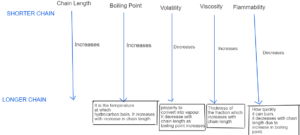
Banner 3
FRACTIONAL DISTILLATION OF CRUDE OIL
- Separating the mixtures on the basis of boiling points.
- It is separated in fractionating column with different substances of similar boiling points
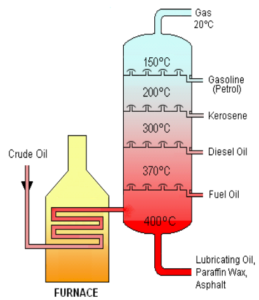
| LIQUIFIED GAS | FUEL |
| GASOLINE/PETROL | CAR FUEL |
| KEROSENE | AIRCRAFT FUEL |
| DIESEL OIL | FUEL IN DIESEL ENGINES |
| RESIDUE | MAKING ROADS |
L – Look
G – Great
K – Kid
D – Doing
R – Roll
CRACKING –Thermal decomposition of longer chain hydrocarbon into a shorter chain alkane and alkenes
Thermal Cracking Catalytic Cracking
It is done at a very high temperature It is done using a catalyst
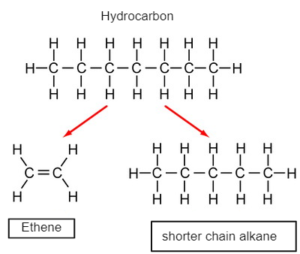
Banner 3
WHY CRACKING
- Shorter chain alkanes are more in demand as they are more efficient fuel which fractional distillation alone cannot meet.
- Alkenes are required for polymerization and synthesize other hydrocarbons which fractional distillation cannot meet.
ALKANES – Saturated Hydrocarbon
Carbon-carbon single bond made up of carbon and hydrogen
General Formulae CnH2n+2
Methane – CH4
Ethane – C2H6
Propane – C3H8
Butane – C4H10
Pentane – C5H12
Homologous Series – Members of the same family have similar functional group similar chemical properties and general formulae but different physical property and each members differs from successive by CH2.
COMBUSTION
|
COMPLETE
|
INCOMPLETE
|
| FUEL IS COMPLETELY BURNED |
FUEL IS PARTIALLY BURNED DUE TO LIMITED SUPPLY OF OXYGEN
|
| PRODUCES CARBON DIOXIDE AND WATER |
PRODUCES CARBON MONOXIDE AND WATER
|
| IT IS NOT TOXIC |
CARBON MONOXIDE IS TOXIC AS IT DECREASES. THE OXYGEN CARRYING CAPACITY OF RED BLOOD CELLS
|
PRODUCTS OF COMBUSTION
Carbon Dioxide Test
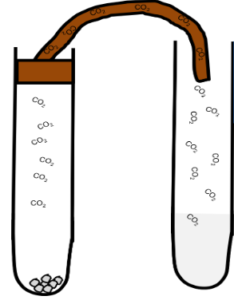
Limewater Test Carbon Dioxide will turn limewater milky
Water Test
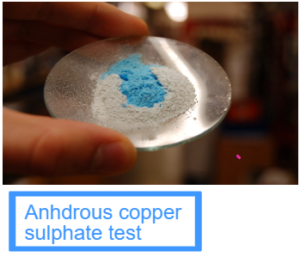

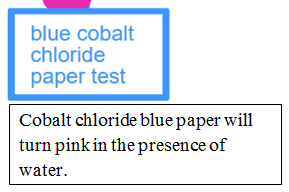
Banner 4
FUNCTIONAL GROUPS
Groups of atoms that give special properties and reactions to the organic molecule
| Functional Groups | Examples | Formation | |
| ALKENES | = | Ethene, propene, butene, pentene | Cracking of crude oil |
| ALCOHOLS | -OH | methanol, ethanol, propanol, butanol, pentanol | Reaction of alkene with water |
| CARBOXYLIC ACID |  |
methanoic acid, ethanoic acid, propanoic acid, butanoic acid. | Oxidation of alcohols |
| ESTERS |  |
methyl ethanoate, ethyl ethanoate | Reaction of alcohols and carboxylic acid |
ALKENES
Unsaturated Hydrocarbon
- Compounds which have carbon-carbon double bond
- Compounds made up of carbon and hydrogen only
GENERAL FORMAULE CnH2n
Useful to make polymers, alkanes, alcohols
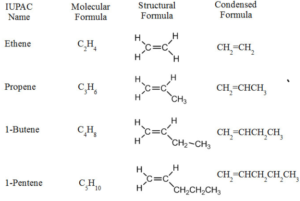
MANUFACTURE OF ETHANOL
| FERMENTATION | HYDRATION OF ETHENE | |
| REACTION |
Glucose Ethanol + carbon dioxide C6H12O6 2C2H5OH + 2CO2 |
Ethene + Steam Ethanol |
| REACTION CONDITIONS | Gentle temperature and pressure. Anaerobic conditions | Nickel catalyst and high temperature and pressure |
| ADVANTAGES | Uses renewable resources like sugarcane. Less dependent on fossil fuels and due to less energy requirements do not harm the environment. | It is a continuous process. It is rapid more efficient and have 100% atom economy. Produces more pure ethanol |
| DISADVANTAGES | It is a batch process. The ethanol has to be distilled from time to time as high concentration will kill the yeast. The reaction is slow and produces impure ethanol. Also the atom economy is not 100% | Requires ethene which is dependent on crude oil. Uses non renewable resources. |
Banner 5
REACTIONS OF ALKENES
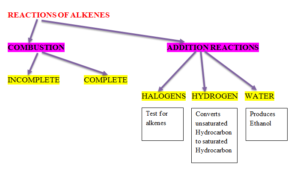
ALCOHOLS – Have functional Group –OH
General Formulae
CnH2n+1 OH
Formed by replacing hydrogen of alkane with OH group
Used as fuel, solvents, spirits
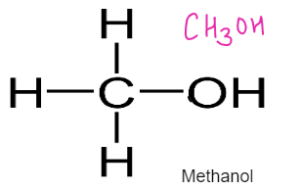
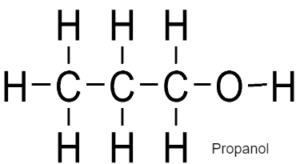

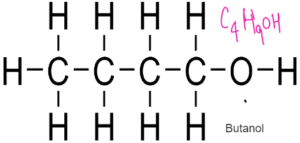
REACTIONS OF ALCOHOLS
COMBUSTION
- It can undergo complete or incomplete combustion. Complete combustion produces carbon dioxide and water.
- Ethanol + Oxygen = Carbon dioxide + water
C2H5OH + O2 CO2 + H2O
- Incomplete combustion produces carbon dioxide and water.
- Ethanol + Oxygen = Carbon monoxide + water
C2H5OH + O2 CO + H2O
OXIDATION
- Alcohols are oxidised to carboxylic acid in the presence of oxidising agent.
- Methanol Methanoic Acid
- Ethanol Ethanoic Acid
- Oxidising agent used is acidified potassium dichromate solution
METAL
Alcohols react with metals to form salt and hydrogen.
2C2H5OH + 2Ca 2C2H5OCa + H2
CARBOXYLIC ACID
Weak Acids
Carboxylic Acids are weak acids as they are partially dissociated in water to release H+ ions.
CH3COOH ⇌ CH3COO– + H+
Metal oxides and Metal hydroxide
Carboxylic Acid reacts with metal oxides and metal hydroxide to form salt and water.
CH3COOH + NaOH CH3COONa + H2O
Metal carbonate
Carboxylic Acid reacts with metal carbonate to form salt, water and carbon dioxide.
CH3COOH + Li2CO3 CH3COOLi + CO2 + H2O




Baneer 6
ESTERS
- Fruity smelling compounds
- Used in the manufacture of perfumes, foods and cosmetics.
CARBOXYLIC ACID + ALCOHOLS ESTERS + WATER
Alkyl alkanoate
Methanoic Acid + Methanol Methyl methanoate + Water

ADDITION POLYMERIZATION
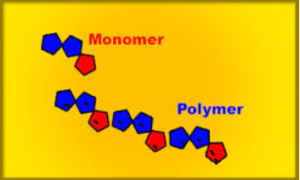
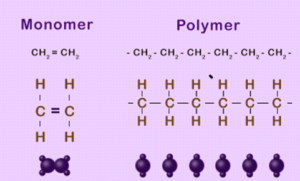
- The individuals unit that polymerizes to form a polymers is known as a monomers. Eg Ethene
- The structure formed by the polymerization of the monomer is a polymers.
Polymers are materials made by linking up smaller repeating chemical units.
Some bend and stretch – rubber and polyester.
Some hard and tough – epoxies and glass.
ADDITION POLYMERS
- a) Formed by addition reaction.
- b) Require only one monomer generally an alkene
- c) Nothing is lost in the reaction.
eg Polyethene, polypropene
CONDENSATION POLYMERS
- a) Requires two monomers
- b) Requires two functional group
- c) Formed by condensation reaction.
- d) A small molecule of water is
- e) Example: Nylon a polyester
NATURAL POLYMERS
- a) They are found naturally
- b) All the complex biomolecules are polymers
| Monomer | Polymer |
| Glucose | Starch |
| Proteins | Amino Acid |
| Nucleotide | DNA |
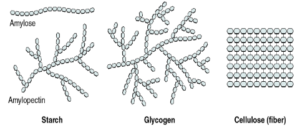
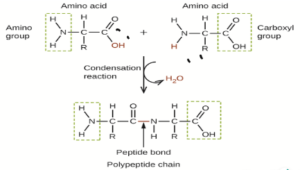
DNA
- a) DNA is polynucleotide
- b) Nucleotide = Phosphate + Sugar + Nitrogenous Bases
- c) There are four bases present in the DNA
- Adenine
- Thymine
- Guanine
- Cytosine
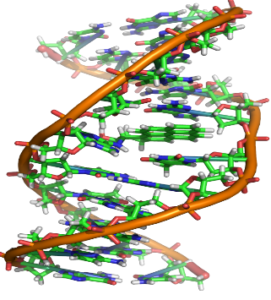
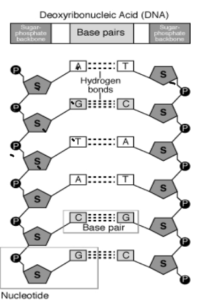
KEY TERMS
Hydrocarbon – Hydrocarbon are the compounds made up of carbon and hydrogen only.
Crude Oil – It is a black thick liquid which takes millions of years to form. It is the mixture of hydrocarbon.
Fractional Distillation – Separating the mixtures on the basis of boiling points.
Alkanes – Saturated Hydrocarbon. Carbon-carbon single bond. Made up of carbon and hydrogen only
Saturated hydrocarbon – Saturated Hydrocarbons have only carbon-carbon single bonds.
Unsaturated hydrocarbon – Unsaturated Hydrocarbons have carbon-carbon double bonds and triple bonds.
General Formula – It applies to families of compounds; provides a way to predict the molecular formula of the molecule, based on the number of carbon atoms it contains.
Viscosity – movement of flow. A fluid with low viscosity flows easily
Flammable – Flammable materials are combustible materials that can easily ignite at room temperature
Complete Combustion – Fuel is completely burned. Produces Carbon dioxide and water.
Incomplete Combustion – Fuel is partially burned due to limited supply of oxygen. Produces Carbon Monoxide and Water.
Cracking – Thermal decomposition of longer chain hydrocarbon into a shorter chain alkane and alkenes
Alkenes – Unsaturated Hydrocarbon. Compounds which have carbon-carbon double bond. Compounds made up of carbon and hydrogen only
Functional Group – Groups of atoms that give special properties and reactions to the organic molecule
Homologous Series – Members of the same family have similar functional group similar chemical properties and general formulae but different physical property and each members differs from successive by CH2
Alcohols – Have functional Group –OH. The General Formulae of Alcohols is CnH2n+1 OH. Used as fuel, solvents, spirits
Carboxylic Acid – Carboxylic Acids are weak acids as they are partially dissociated in water to release H+ ions.
Esters – Fruity smelling compounds. Used in the manufacture of perfumes, foods and cosmetics.
Fermentation – Fermentation is a metabolic process that produces chemical changes in organic substrates through the action of enzymes.
Weak Acid – Weak acids are only partially ionized in their solutions.
Monomers – The individuals unit that polymerizes to form a polymers is known as a monomers. Eg Ethene
Polymers – The structure formed by the polymerization of the monomer is a polymers. Polymers are materials made by linking up smaller repeating chemical units.
Some bend and stretch – rubber and polyester.
Some hard and tough – epoxies and glass.
Addition Polymerization – It is the process of repeated addition of monomers with double or triple bonds to form polymers. There is no loss of an atom or a molecule. Ex – PVC, polyethene, Teflon.
Condensation Polymerization – It is a process that involves repeated condensation reactions between two different monomers. There is a loss of a molecule of water, ammonia etc as a by-product. Ex – Nylon, bakelite, silicon.
Monosaccharide – Simplest carbohydrates (single units). They cannot be hydrolyzed into smaller units. Ex – Glucose, fructose.
Polysaccharide – Formed of numerous monosaccharide units. Ex – starch, cellulose
Starch – It is the reserve food material of plant cells. It consists of two components- amylose and amylopectin, both glucose polymers.
Cellulose – Main structural polysaccharide of plants. It is a long, unbranched chain of about 6,000 glucose units with molecular weight between 0.5 to 2.5 million.
Proteins – The proteins are linear unbranched polymers of Amino acids. The proteins are composed of carbon, hydrogen, oxygen, nitrogen, and Sulphur.
DNA – It is a long, double chain of deoxyribonucleotide units. DNA is the genetic material and forms molecular basis of heredity in all organisms.
Disclaimer:
I have tried my level best to cover the maximum of your specification. But this is not the alternative to the textbook. You should cover the specification or the textbook thoroughly. This is the quick revision to help you cover the gist of everything. In case you spot any errors then do let us know and we will rectify it.
References:
BBC Bitesize
Wikipedia
Wikimedia Commons
Image Source:
Wikipedia
Wikimedia
Commons
Flickr
Pixabay
Make sure you have watched the above videos and are familiar with the key definations before trying these questions. It is also good to time yourself while doing these questions so that you can work on the speed as well.

